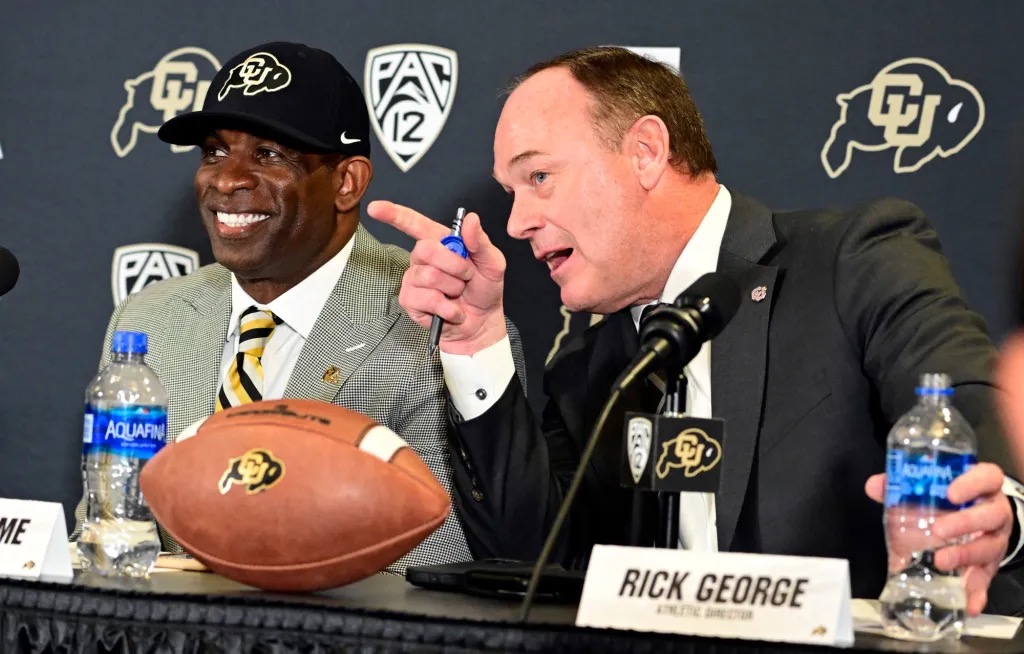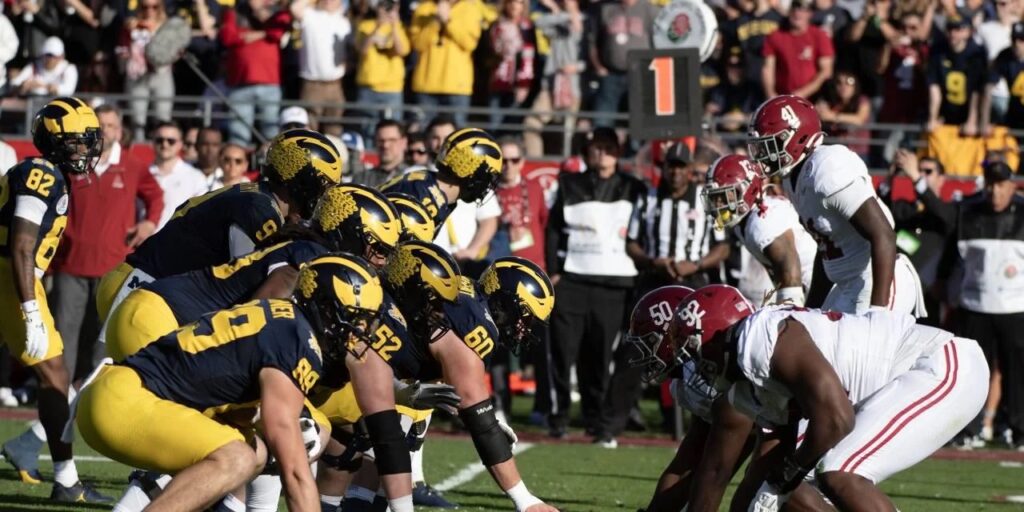CU’s biggest problem isn’t a lack of high school recruiting or the offensive coordinator. It’s the conference that it plays in.
As college football continues to morph into a three-tier economy with the Big 10 and SEC on top, followed by the Big 12 and the ACC, and then the Group of 6, the Buffs currently find themselves on the wrong side of the velvet rope. The Big 12 is entertaining and fun, but it’s not where the real money is being made. And in today’s college football world, real money = real opportunity for success.
We’ve written extensively about this as the biggest issue facing the future of Colorado football. For more on this topic, see:
The divide between the Big 10 and SEC and the rest of college football almost became permament this month.
Thank Michigan that it didn’t.
The Big 10 Power Play
According to Yahoo Sports’ Ross Dellenger, the Big 10 was quietly moving towards a $2.4 billion cash infusion from part of California’s pension system, UC Investments. The idea was to create a new entity, “Big 10 Enterprises,” that contained all of the Big 10’s TV and media rights. UC Investments would get a 10% ownership interest in the new enterprise in exchange for $2.4 billion, which would have provided every Big 10 school at least $100 million of cash (and Michigan, Ohio State and Penn State an estimated $190 million of cash).
In order to make the deal work, the Big 10 would need to extend their grant of rights through 2046. That means another 20+ years of guaranteed membership, cementing the stability of the Big 10 for another generation.
This move would create a financial moat around the Big 10. The Big 10 would be locked in with the current 18 teams for a long time, in effect hanging a “no vacancy” sign hung outside the Big 10’s office.
If approved, the deal would ensure that Big 10 membership was locked down for another 20 years, giving the league financial stability while freezing the college football power structure in place. It means that the “Super League” that has been talked about for the last 10 years wouldn’t happen, at least for a long time.
For Colorado, that would have meant a slammed door to Big 10, or Super League, membership for at least the next 2 decades.
Not good.
An unlikely savior?
Ross Dellenger reported that there was a crack in the Big 10’s armor. While nearly all Big 10 schools were licking their lips about the possibility of a $100 million to $200 million cash infusion, Michigan pushed back.
Their objection was that extending the grant of rights to 2046 locks all Big 10 schools into an unbreakable marriage. And does Michigan want to be married to Rutgers and Maryland and Northwestern for the next 20+ years?
Michigan understands that college sports are changing so quickly that it’s impossible to say what it’ll look like in 5 years, let alone 20 years, and so betting the next 20 years of media rights on a deal built in 2025 feels premature.
Michigan also doesn’t love the idea of selling a piece of the league’s media rights to an outside investor, even a government pension fund. Once you take private equity money, even quasi-private equity money, you’re starting to run on the proverbial treadmill. You owe them returns. The risk shifts from the universities to Wall Street.
After Michigan publicly pushed back on the potential investment, USC joined them with similar concerns. Their combined resistance might derail the $2.4 billion plan. And that’s where Colorado comes back into the story.
Why this matters to CU
CU is playing in the middle class of college football. The Big 12 is fine but it’s not the biggest show on Satuday. The money gap between the Big 12 and Big Ten/SEC is widening by the year. This year, the Big 10 will distribute $30+ million more to its teams than the Big 12 will distribute to its teams. And that gap will widen every year.
If the Big Ten had gone ahead and extended its grant of rights to 2046, it would have cemented that divide for two decades. No expansion, no restructuring, no real chance for the Buffs to jump into the super-league era when it inevitably arrives.
Michigan’s revolt keeps the door cracked.
If the UC Investments deal collapses, the Big Ten’s grant of rights would remain tied to its existing media contract timeline — 2030. That means the next decade of college football is still fluid. Realignment, breakaway super league, and new power structures remain on the table.
For the Colorado athletic department, and it’s budget, that’s positive. Colorado being locked into a tier 2 conference with no way “up” isn’t good.

What happens next?
Big 10 sources have told Yahoo that a vote on the UC Investments deal could come later this fall, but it’s uncertain whether commissioner Tony Petitti has the support to push this through. (By the way, of course Tony Petitti is pushing for this outside investment – it gives him job security, and a very fat paycheck, for the next 20 years).
If the opposition holds from Michigan, however, the deal won’t go through. And every year that goes by without that extension is another year that the college football map can change.
Now, for the cold water. No one in Boulder should assume that the Buffs are Big 10 bound. Rather, Rick George needs to keep his eyes on the likely consolidation of power into a 40(ish) team Super League. That’s where we think college football is heading, and that’s where the Buffs’ best chance to get on the other side of the velvet rope lies.
That opportunity remains cracked open so long as Michigan continues to push against the UC Investments deal.
Want to read more in the BuffsBlog blogosphere? Check out our preview on the men’s hoops team at:

Smart stuff.
I agree that CU needs to try to position itself for Super League membership. At this point for the Buffs, chaos = good. Entrenching the current system means that CU’s athletic department will receive 30-50 million less each year than, say, Indiana or Rutgers which is crazy. I think CU is more desirable than some of those programs in the Big 10, so getting into a Super League should be the goal. .
it’s a catch 22 for dear old cu. the big 10 brings big bucks but we would always be a middle of the pack team maybe making the playoffs once every 5-10 years. the big 12 we’re broke as a joke but we could make the playoffs 3 out of every 4 years if cp stays.
Today Brett Yomark said the Big 12 would support an expanded playoff if all 4 power conferences got the same number of bids. If that happens, it’s a huge win for the Big 12 — massive — and makes Big 12 membership much, much more desirable than it is right now.
That ain’t gonna happen but if it was one less than the big10/sec that would be a huge win.
John,
Since this is an article on the future of CU athletics, I have to ask about AD Rick George’s contract. I think it ends on June 30, 2026 and is there any movement for a new AD at CU?
I’m pretty sure it ends June 30, 2027. I’ve also heard two names thrown around as leaders in the clubhouse to replace him — one of which is a former CU football player.